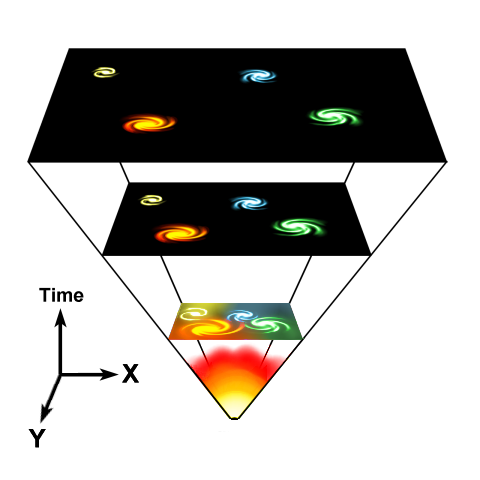Wear the Damned Hat
Read/Post Comments (4)

Time is a line. Or it could be a loop. Or a sphere. Or maybe it's the undergrowth of a giant's big toe. Regardless of what it is, it's always moving forward. We haven't discovered a way to move time backward. Yet. Give me a little time to work on my flux capacitor.
And since the beginning of time, if time really does have a beginning, our Universe has been expanding like a boundless balloon. What was before the expansion and what we're expanding into...why those are questions better left for men and women of the cloth.
As the Universe expands, stars are burning in and out of existence. And when these stars burn out of existence, the galaxies they're a part of burn out of existence as well. So I've read that one day, our Universe is going to be one dark and desolate place. Just a large space filled with Black Holes and the occasional star or two or three million. Lots of black holes though. Kind of weird to think that our future lies in the denseness of a black hole.
I've read and heard that all of the energy that exists in our Universe was present at the Big Bang. And I've read that Dark Matter, a hypothetical form of matter that doesn't emit or reflect enough electromagnetic radiation to be observed directly, makes up the vast majority of matter in our Universe. Scientists say this, it must be true.
Our Universe is estimated to be 13.7 billion years old. Estimated being the key word. Scientists have the exact date narrowed down to within, oh, about 200 million year. Call it an Intergalactic Poll's plus/minus margin of error.
The Milky Way galaxy, the big city that Earth lives on the outskirts of, is approximately 100,000 light years in diameter, and about 1,000 light years thick. It has somewhere from 200 - 400 billion resident stars. The Milky Way is 13.4 Billion years old, which puts it at around the same age as the Universe itself. Well, the same age being separated by a couple hundred million years or so. I know this because wikipedia knows this. And because I watch the Discovery Channel with high regularity.
Our solar system, you know, the one we live in, is a relative newcomer at 4.7 billion years of age. And after hundreds of millions of years of gases, rocks, and elements slamming together with one another, we came up with 8 planets: Mercury, Venus, Earth, Mars, Jupiter, Saturn, and Neptune. Poor little Pluto was recently demoted.
Some planets are more rocky in composition...Mercury, Venus, Earth, and Mars, I'm looking in your direction. Some planets are more gaseous in composition. Did you know that if you could find an ocean large enough to fit it, Saturn would float as easily as a rubber ducky?
The planet we call home is as old as our solar system, and interestingly enough, almost against all odds, life formed soon thereafter. At first, we were single celled organisms that struggled for life on a planet of hot magma and little atmosphere. And then life became reptilian. And then the reptiles were wiped out by rocks from above. Or maybe they were wiped out by insects as was recently hypothesized. Who the fuck knows? What we do know is that millions of species somehow sprung up from the ashes. And in the blink of an eye, it's Saturday, January 19th at 2:13 pm.
And here we are, a planet of millions of species, existing on a planet that's a part of a solar system of gaseous and rocky planets that are a part of a galaxy which is a part of the ever expanding Universe of dark matter and elements and gases which all comes from the event known as the Big Bang.
The odds of winning the "Pick 6" lottery in Texas are 1 in 25,827,165. The odds of human life happening on earth as it happened are almost incalculable. And here I am, actually wondering what people will think of me if I start wearing a Cowboy hat.
- Matthew
Read/Post Comments (4)
Previous Entry :: Next Entry
Back to Top